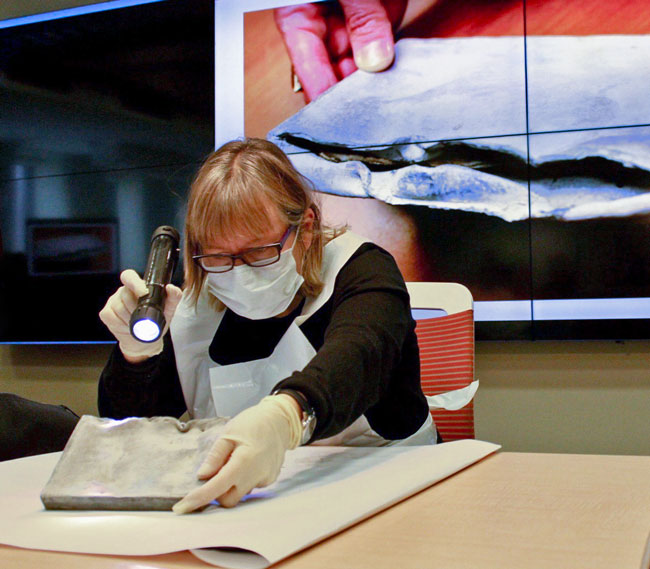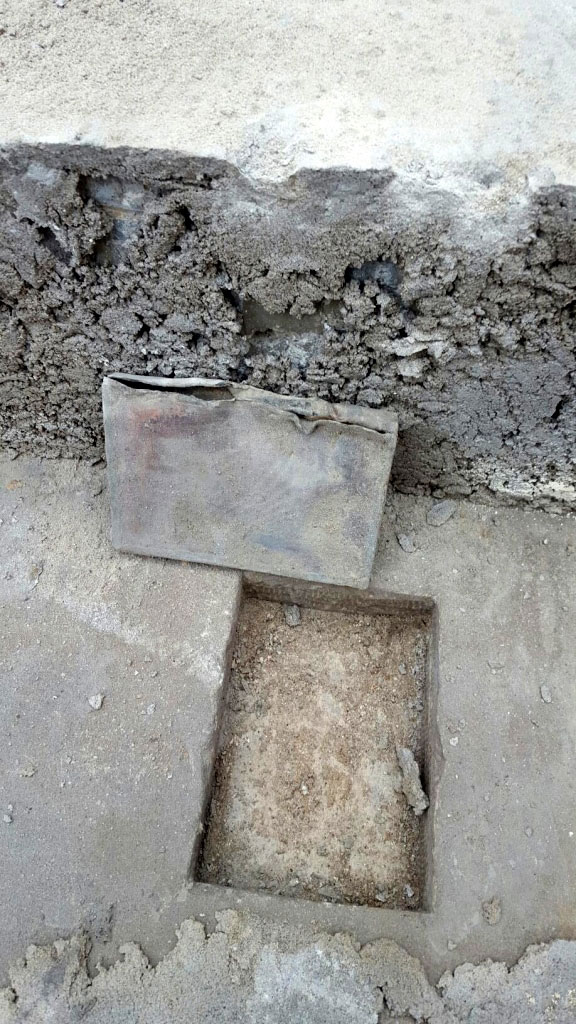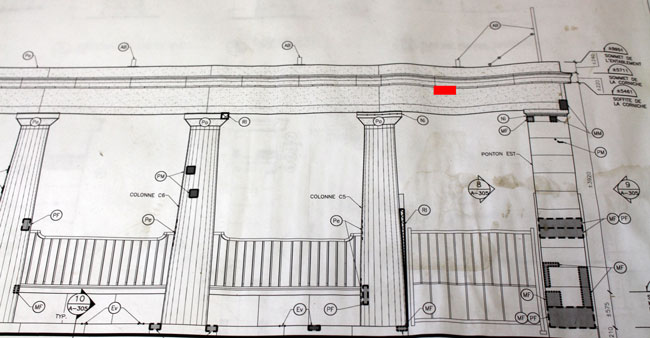
In the end, everyone knew a singing frog wasn’t going to jump out of the time capsule uncovered by construction workers in one of the columns on the east side of the Roddick Gates on March 1. But it would have been cool.
Instead, the contents of the iPad-sized lead container proved to be nothing more than a handful of paper, most of it degraded and covered by mold. Some smaller pieces, removed with extreme delicacy by Chantal Emond, Conservator, were bits of a French-language newspaper.
The time capsule was discovered on March 1, during renovations to the Roddick Gates. It was found during work on the arches on the Northeastern side of the Gates – a strange location by traditional standards. “Usually these time capsules are found lower down, but this was found near the top of the Gates,” says Lori Podolsky, McGill Archivist, who suggests the capsule was probably put in place sometime in 1924-25, during the construction of the Gates.
For an archivist, news of the discovery was thrilling. “I got a call soon after the time capsule was found and I said ‘I’ll be right over,’” she says. “This was a complete surprise. We knew nothing about it.”

The small container, measuring 5×7 inches is less than an inch deep, was neatly encased in a piece of stone that was scored and chiseled specifically to fit the capsule. Unfortunately, because one side of the capsule was damaged – likely many years earlier – its contents were not well protected. As a result, most of the paper that was retrieved was illegible.
And so the mystery grows.
So far, Podolsky’s searches through McGill Archives has turned up no mention related to the Roddick capsule. Her next step is to check copies of local newspapers from the era that may have covered the construction, dedication and opening of the Gates. Perhaps the time capsule – and its original contents may be mentioned.
The Roddick Gates were commissioned in 1924, by Lady Amy Redpath Roddick, in memory of her husband Sir Thomas Roddick. Sir Thomas, a graduate of McGill’s Faculty of Medicine, served as the Dean of the Faculty of Medicine from 1901 – 1908.
The Gates, which cost $50,000, officially opened in 1925, complete with a clock tower because Sir Thomas was a renowned stickler for punctuality.
It isn’t the first time capsule found at McGill. In 2003, Sergeant Mathieu Racette of Campus Security stumbled upon a similar capsule, while doing a security patrol near the Wong Building. It was found amongst the debris of the demolished Donner Building, built in 1947. Inside the capsule was a copy of the McGill Daily and a McGill calendar from 1947, as well as the speech given when the building was first opened.
Podolsky says the Roddick Gates capsule probably isn’t the last, noting that a number of buildings on campus were constructed during a time when time capsules were in vogue. “We do suspect there are many time capsules on campus – in cornerstones and near monuments,” she says. “But it’s impossible to know exactly because this type of information is not recorded in our archives. It was the kind of thing that was often done by the mason or people helping with construction.”
Next, the capsule will be taken to Emond’s lab where it will be cleaned to see if there are any inscriptions or markings on it. “Hopefully, we’ll find something that will give us a little more context,” says Podolsky. “For now it’s a really neat mystery.”

